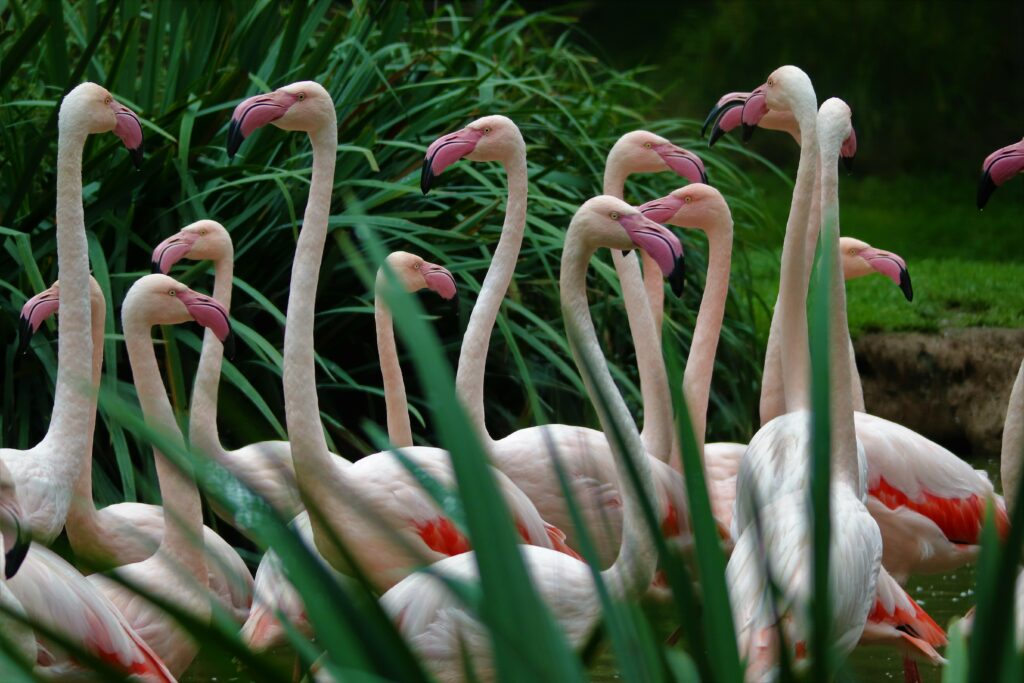
Greater flamingo
Class: Birds
Order: Phoenicopteriformes
Family: Phoenicopteridae
Genus: Phoenicopterus
Species: Roseus
Geographic Distribution: Africa, Asia, and Europe
Habitat: Shallow saltwater bodies
Size / Wingspan: 127 cm / 145 to 165 cm
Longevity: 33 years
Weight: 2 to 4 kg
Sexual Maturity: 3-4 years
Incubation: 27-31 days
Clutch: 1 egg
Diet: Piscivorous, protozoa, algae, crustaceans, mollusks, insects
Protection Status: IUCN Status CR – Least Concern
Description
Flamingos are characterized by their unique beak, designed to feed in a different way from other birds. Thanks to a filtering and pumping system, they can extract their food from the water by filtering out food particles. Infact, the pink color of their feathers comes from the carotenoid pigments found in their food.
Threats and preservation
Flamingos are particularly vulnerable tohuman disturbance, as well as to the destruction and drying out of wet lands, which represent their main threats. The Camargue is the main permanent breeding ground for flamingos in France.